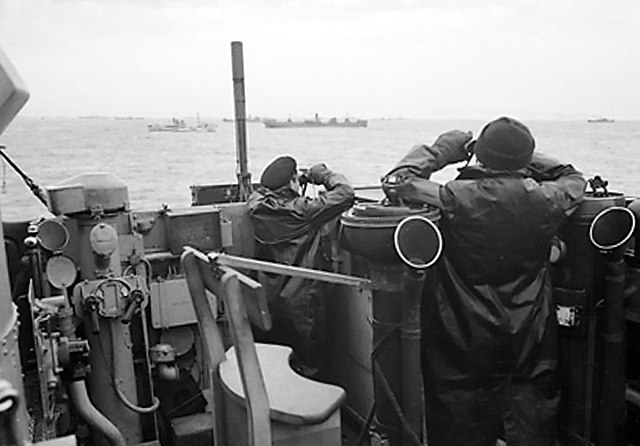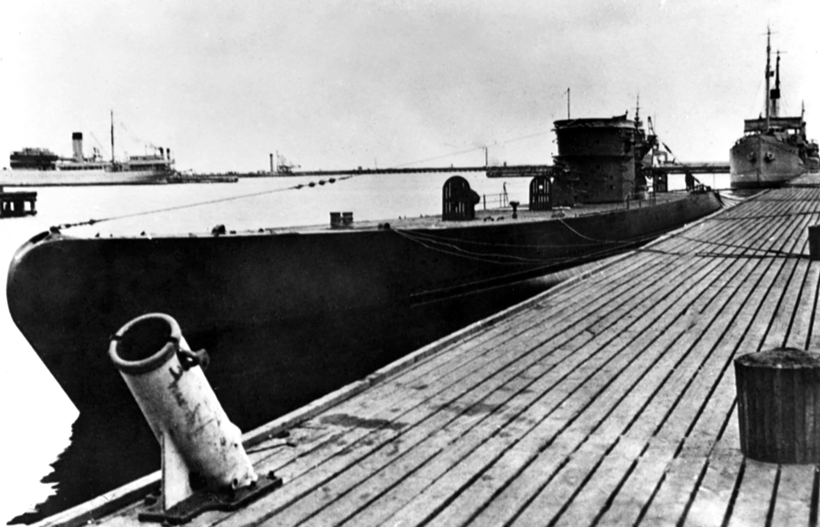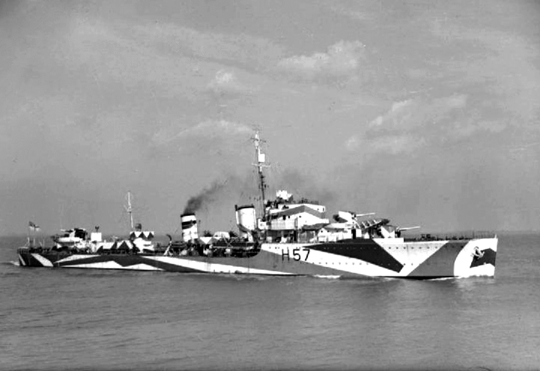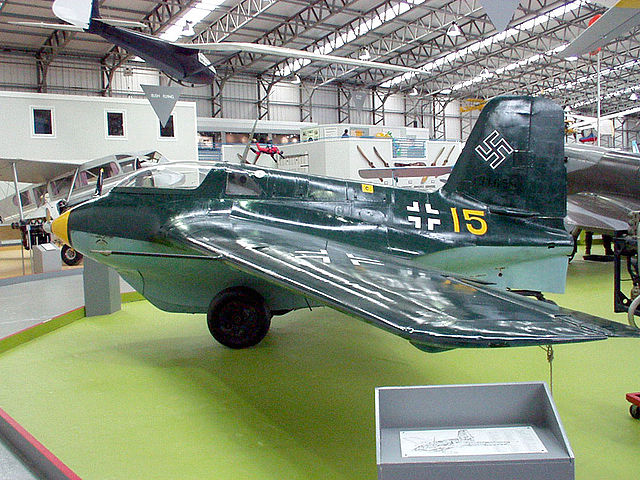
Submarine tactics in the Battle of the Atlantic 1939-1945. part 2

German "Milk Cow" (type XIV) - U 464 - since 1942, in the Atlantic, supplying other submarines with fuel, torpedoes and food.
Joining the war of the United States significantly changed the image of the Battle of the Atlantic. German long-range submarines in the first half of 1942 were very successful off the American coast, taking advantage of the Americans' inexperience in the fight against U-boats. In the convoy battles in the middle of the Atlantic, however, the "Gray Wolves" were not so easy. In view of the growing strength of the escort, and the dissemination of better and better radars installed on surface ships and Allied aircraft, it was necessary to change the tactics in attacks on convoys.
Already in mid-December 1941, Dönitz developed a plan for the first U-boat attack on the eastern coast of the United States and Canada. He hoped that the Americans had no experience in fighting his ships and that the Type IX submarines sent to these waters would be quite successful. It turned out that he was right, but it could have been otherwise, because until the end of January 1942, British cryptologists followed the movements of German U-boats in the ocean. They warned the American command about the planned attack by the Germans, even stating when and where exactly it should be expected and which German ships would take part in it.

HMS Hesperus - one of the British destroyers engaged in combat in the Atlantic with German submarines.
However, Admiral Ernest King in charge of the defense of the area was too proud to ask the more experienced British how to defend themselves most effectively with U-boats in shallower coastal waters. In fact, King's subordinates did nothing that could prevent the Germans from attacking the vicinity of the most important American ports, although they had a month to do so since the war broke out.
It was possible to set up minefields in such a way that the mines would only be dangerous for U-Boats, placed at a depth of 15 m and below, while ships would pass safely over them. King could also stipulate that at least one third of the available destroyers should be delegated to escort coastal convoys1, because after leaving ports, groups of ships had to be formed at least in the most dangerous sections (especially near from ports) along the coast and assigned to them with the cover of a destroyer or other patrol unit. as well as providing cover for the passage of these convoys by single planes. U-boats were to attack in these waters individually and at a great distance from each other, so only such a defense could significantly reduce losses. Unfortunately, when the German operation began, the ships set off for the coastal waters alone and the U-Boats could sink them even with on-board artillery after being intercepted. There was also no care on the American coast (and in the ports themselves) to introduce blackout, which later made it easier for U-boat commanders to attack at night, because the ships could see very well against the shore lights. And the few planes available to Americans (initially 100) were not even equipped with depth charges at that time!
Therefore, the five submarines of type IX (U 123, U 66, U 109, U 130 and U 125) encountered practically no resistance when, on January 14, 1942, Canadian waters off the southern shores of Nova Scotia and near Cape Breton Island, where the few Canadian ships and planes counterattacked quite menacingly. Nevertheless, the start of Operation Paukenschlag was very successful for the Germans. They sank a total of 2 ships with a capacity of 23 GRT and damaged 150 more (510 GRT) without suffering losses themselves. Dönitz, knowing now that his ships would be unpunished in these waters for the time being, organized new "waves", i.e. new and larger groups of U-boats, continuing more and more effective actions (when one group returned to French bases after running out of fuel and torpedoes, there were to replace them). During the day, the U-boats descended to a depth of 2 to 15 m and there lay on the seabed a few miles from the shipping lanes, returning at night, continuing their attacks. Attempts to counteract the American ships in the first quarter of 192 were grossly ineffective. They patrolled the designated sections of the coast alone with such regularity that the commanders of the U-boats set their watches according to them and they could easily avoid fighting them, or they could attack the approaching surface ship themselves. This is how the destroyer USS Jacob Jones was sunk, torpedoed on February 45, 135 by the German submarine U 1942.
In the first quarter of 1942, U-Boats sank 203 units with a capacity of 1 GRT in all waters, and the Germans lost 133 ships. Two of them (U 777 and U 12) sank planes with American crews in March. On the other hand, the destroyer USS Roper sank the first U-boat (U 656) near North Carolina on April 503, 85. The British, at first terrified of the Americans' lack of skills in defending their East Coast, finally sent them help in March 14 in the form of 1942 corvettes and 1942 trawlers, although they needed these ships themselves. Admiral King was finally persuaded to launch convoys between New York and Halifax and between Key West and Norfolk. The effects came very quickly. Ship sinkings dropped from 10 in April to 24 in May and zero in July. The U-boats moved to the waters of the Gulf of Mexico and the coast of South America and the Caribbean region, calling it the new "U-boat paradise" because they were still very successful there. In the second quarter of 24, German submarines sank 5 units with a capacity of 1942 GRT in all areas of the Atlantic and adjacent seas. 328 U-boats sank in combat, including two in American waters.
In the second half of 1942, the U-boat attack on the American east coast continued, and the Germans were able to extend their sea operations during this period, as they gained the ability to refuel, torpedoes and food from submarine type XIV supplies, known as "Milk Cows". Nevertheless, the defense of the Americans off their coasts was gradually strengthened, especially the strength of air patrols and the losses of the Germans slowly began to increase, as did the operations in the Atlantic, especially in direct convoy battles.
